Comparing Objects
When we compare objects, we are looking at their attributes to determine how they are similar or different. In math, we often compare objects based on their size, weight, length, height, or quantity.
Comparing by Size
To compare objects by size, we look at their dimensions. We use terms like "bigger than," "smaller than," or "the same size as" to describe the relationship between the objects.
Comparing by Quantity
When comparing objects by quantity, we count the number of items in each set and determine which set has more, fewer, or the same number of items.
Using Comparison Symbols
In math, we use symbols to represent comparisons. The symbols < (less than), > (greater than), and = (equal to) are used to show the relationship between two objects or quantities.
Example
For example, if we have two sets of apples, one with 5 apples and the other with 3 apples, we can say that the first set is greater than the second set (5 > 3).
Comparing with Words and Symbols
We can express comparisons using both words and symbols. For instance, we can say "The red ball is smaller than the blue ball" or use the symbol to write "red ball < blue ball."
Comparing objects helps us understand the concepts of size, quantity, and relative relationships, which are important in math and everyday life.
[Comparing Objects] Related Worksheets and Study Guides:
.◂Math Worksheets and Study Guides Second Grade. Comparing Objects
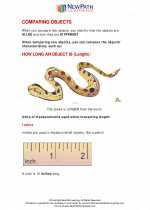
 Activity Lesson
Activity Lesson
 Activity Lesson
Activity Lesson
 Activity Lesson
Activity Lesson
 Activity Lesson
Activity Lesson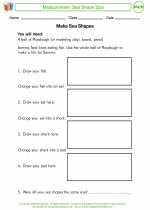
 Activity Lesson
Activity Lesson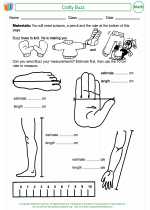
 Activity Lesson
Activity Lesson
 Worksheet/Answer key
Worksheet/Answer key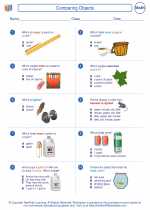
 Worksheet/Answer key
Worksheet/Answer key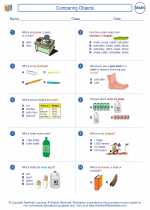
 Worksheet/Answer key
Worksheet/Answer key
 Worksheet/Answer key
Worksheet/Answer key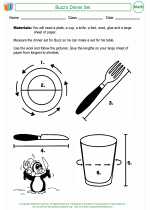
 Vocabulary/Answer key
Vocabulary/Answer key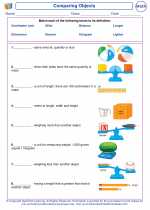
 Vocabulary/Answer key
Vocabulary/Answer key
